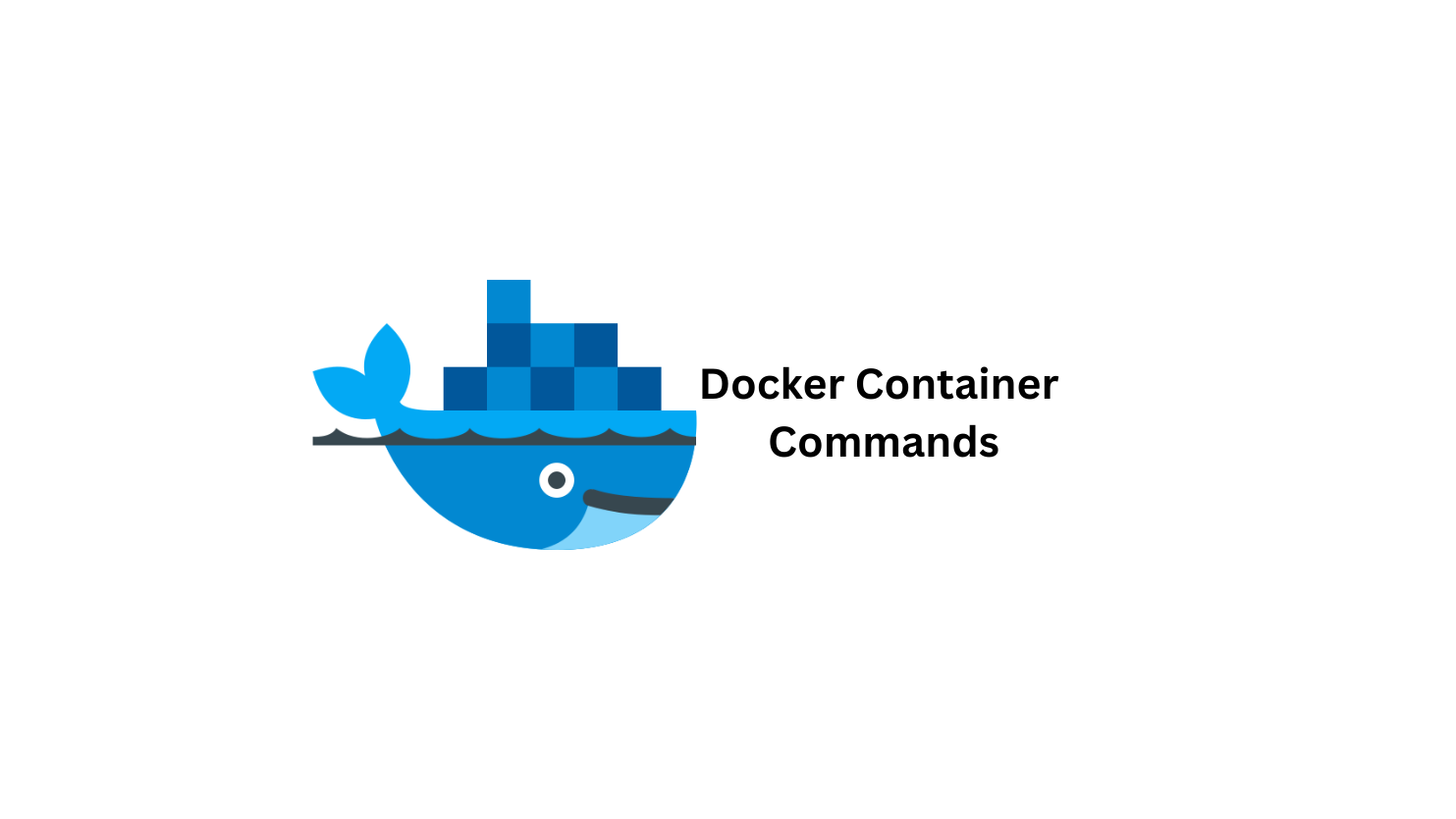Unleashing the Power of Docker Container Commands: A Practical Guide with Examples
 Saurabh Adhau
Saurabh Adhau
Introduction
Docker containers revolutionize application deployment, offering flexibility and efficiency. In this guide, we'll delve into essential Docker container commands, providing insights into their applications and real-world use cases.
1. docker start
The docker start command initiates a stopped container.
Example:
docker start my-container
This command restarts the "my-container" container, bringing it back to life.
Use case: Resuming a previously stopped service or application.
2. docker stop
The docker stop command halts a running container.
Example:
docker stop my-container
This command gracefully stops the "my-container" container, allowing processes to complete before termination.
Use case: Gracefully shutting down a service to perform updates or maintenance.
3. docker restart
The docker restart command stops and then starts a container.
Example:
docker restart my-container
This command ensures a clean restart of the "my-container" container, useful for applying configuration changes.
Use case: Restarting a service with updated configurations.
4. docker pause
The docker pause command suspends all processes in a running container.
Example:
docker pause my-container
This command freezes the "my-container" container's state temporarily.
Use case: Pausing a container to troubleshoot or investigate an issue.
5. docker unpause
The docker unpause command resumes processes within a paused container.
Example:
docker unpause my-container
This command restores the execution of processes in the "my-container" container after it has been paused.
Use case: Resuming normal operations after troubleshooting.
6. docker run
The docker run command creates and starts a container based on a specified image.
Example:
docker run -d --name web-app -p 8080:80 nginx
This command starts an NGINX container named "web-app" in detached mode, mapping port 8080 on the host to port 80 on the container.
Use case: Launching a web server container for local development.
7. docker ps
The docker ps command lists all running containers.
Example:
docker ps
This command displays information about active containers, including their names, IDs, and status.
Use case: Checking the status of running containers for monitoring and management.
8. docker exec
The docker exec command executes a command within a running container.
Example:
docker exec -it my-container sh
This command opens an interactive shell within the "my-container" container.
Use case: Running ad-hoc commands or debugging within a running container.
9. docker logs
The docker logs command displays the logs generated by a running container.
Example:
docker logs my-container
This command provides insights into the output of processes running within the "my-container" container.
Use case: Analyzing container logs for debugging or monitoring purposes.
10. docker rename
The docker rename command changes the name of a container.
Example:
docker rename old-container new-container
This command renames the "old-container" to "new-container" for better organization.
Use case: Updating container names for improved clarity.
11. docker rm
The docker rm command removes one or more containers.
Example:
docker rm my-container
This command deletes the "my-container" container, freeing up resources.
Use case: Cleaning up unused containers to reclaim disk space.
12. docker inspect
The docker inspect command provides detailed information about a container.
Example:
docker inspect my-container
This command offers a JSON-formatted output containing extensive details about the "my-container" container.
Use case: Extracting metadata or configuration details from a container.
13. docker attach
The docker attach command attaches to a running container, allowing you to interact with its processes.
Example:
docker attach my-container
This command attaches to the terminal of the "my-container" container, enabling direct interaction with its processes.
Use case: Interacting with a container's processes in real-time.
14. docker kill
The docker kill command sends a signal to a running container, forcefully terminating it.
Example:
docker kill my-container
This command forcefully terminates the "my-container" container, useful in urgent situations.
Use case: Emergency shutdown of a misbehaving or unresponsive container.
15. docker cp
The docker cp command copies files or folders between a container and the local filesystem.
Example:
docker cp my-container:/app/logs /local/path/logs
This command copies logs from the "my-container" container to a local directory.
Use case: Extracting data or logs from a running container for analysis.
Mastering these Docker container commands empowers you to manage and manipulate containers throughout their lifecycle. From starting and stopping to executing commands within containers, these commands offer flexibility and control, enabling seamless integration into your development and deployment workflows. 🐳✨
Subscribe to my newsletter
Read articles from Saurabh Adhau directly inside your inbox. Subscribe to the newsletter, and don't miss out.
Written by

Saurabh Adhau
Saurabh Adhau
As a DevOps Engineer, I thrive in the cloud and command a vast arsenal of tools and technologies: ☁️ AWS and Azure Cloud: Where the sky is the limit, I ensure applications soar. 🔨 DevOps Toolbelt: Git, GitHub, GitLab – I master them all for smooth development workflows. 🧱 Infrastructure as Code: Terraform and Ansible sculpt infrastructure like a masterpiece. 🐳 Containerization: With Docker, I package applications for effortless deployment. 🚀 Orchestration: Kubernetes conducts my application symphonies. 🌐 Web Servers: Nginx and Apache, my trusted gatekeepers of the web.